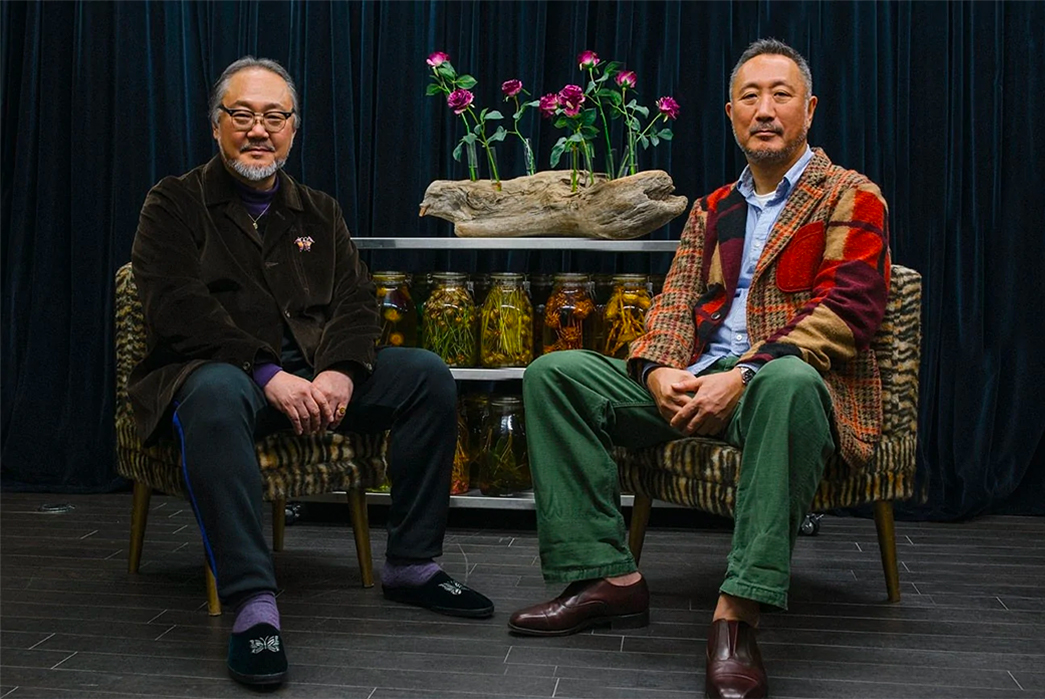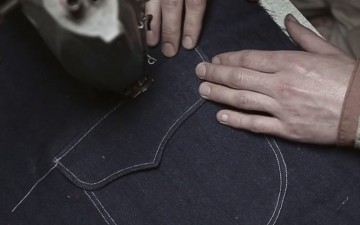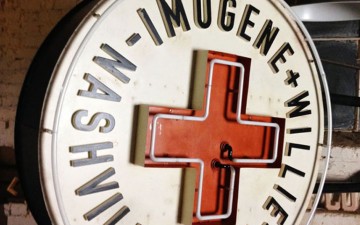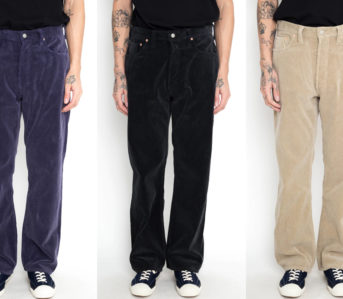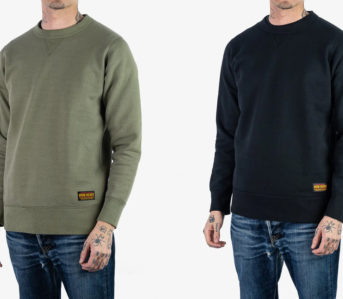Much like the carnivorous tropical plant it is named after, the cult Japanese company Nepenthes isn’t made up of just one part or section. Founded in 1988 by Keizo Shimizu, Nepenthes is a multi-faceted Japanese company that houses some of the most recognizable and unique labels in the heritage, workwear, and high-quality clothing world.
Most of you reading this will be familiar with Engineered Garments, a prominent menswear label run by close friend and business partner of Shimizu, Daiki Suzuki. But the truth is, Engineered Garments is just one stem of Nepenthes. Today, we’ll be looking at all of the brands that sit under the Nepenthes umbrella, talking about their design direction, inspirations, and what makes them special and unique.

Nepenthes logo via Nepenthes London
A Brief History of Keizo Shimizu & Nepenthes
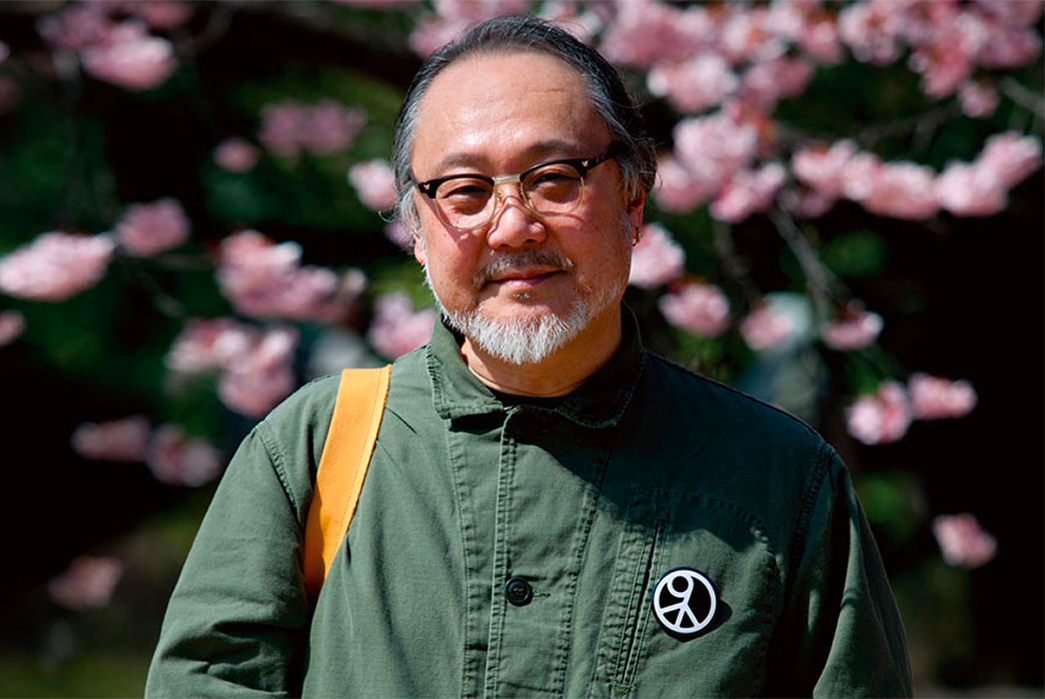
Keizo Shimizu via Houyhnhnm
Born in 1958 in Kōfu, the capital city of Japan’s Yamanashi Prefecture, Keizo Shimizu formed a passion for fashion and the clothing industry at a young age. From his early teenage years, Shimizu would read issues of the Japanese menswear publication Men’s Club, POPEYE, and Made in USA Catalog, and become captivated by the rugged yet relaxed tropes of Americana clothing and design. He studied fashion in Tokyo before working for legendary American-inspired Japanese menswear retailer VAN. Shimizu also went on to work at Japanese importer of American clothing, Redwood, where he met Daiki Suzuki.
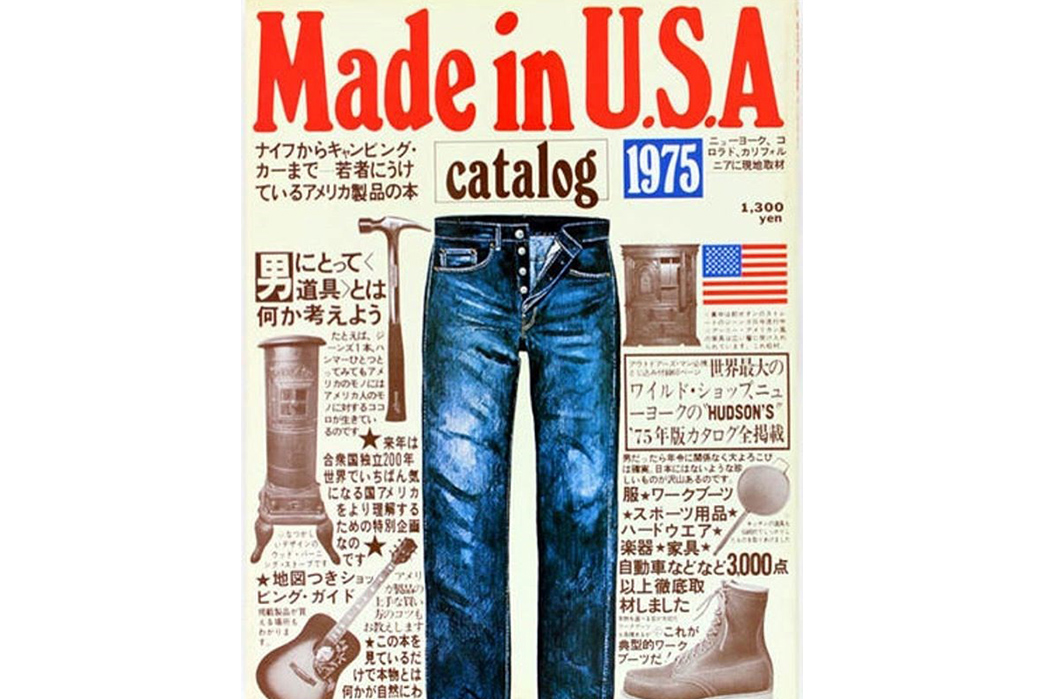
Made in USA Catalog 1975 edition via Dazed
With the help of Suzuki, Shimizu went on to found Nepenthes in 1988. Suzuki moved to America to travel, gain first-hand experience of American life, and act as a buyer for Nepenthes, which until the late-1990s operated mostly as an importer of American clothing — much like Redwood, where Shimizu and Suzuki had connected and earned their stripes together. The first Nepenthes store was stuffed to the brim with American workwear and casual clothing from all of the big-hitting, iconic labels like Levi’s, Lee, L.L. Bean, Sears gear, and Polo Ralph Lauren to name but a few.
Shimizu would link up with Suziki in America to hunt for the best American clothing to import to their new Tokyo outlet. Reflecting on this in an interview with SSENSE, Shimizu states:
“We’d go hunting for untapped brands and factories. We’d buy a road atlas, and navigate towards some final destination. Whenever we arrived at a town, we’d buy a more detailed map, and do some research by flipping through the local yellow pages.
….but just like in Japan, there are regional specialties. For example, if you’re looking for moccasins, you go to New England. I’d picked up some of this kind of info at the company that I’d previously worked at, and based on that, I’d be like, “Let’s go check out that area”—totally on the fly, without any appointments.” – Keizo Shimizu, speaking to SSENSE.
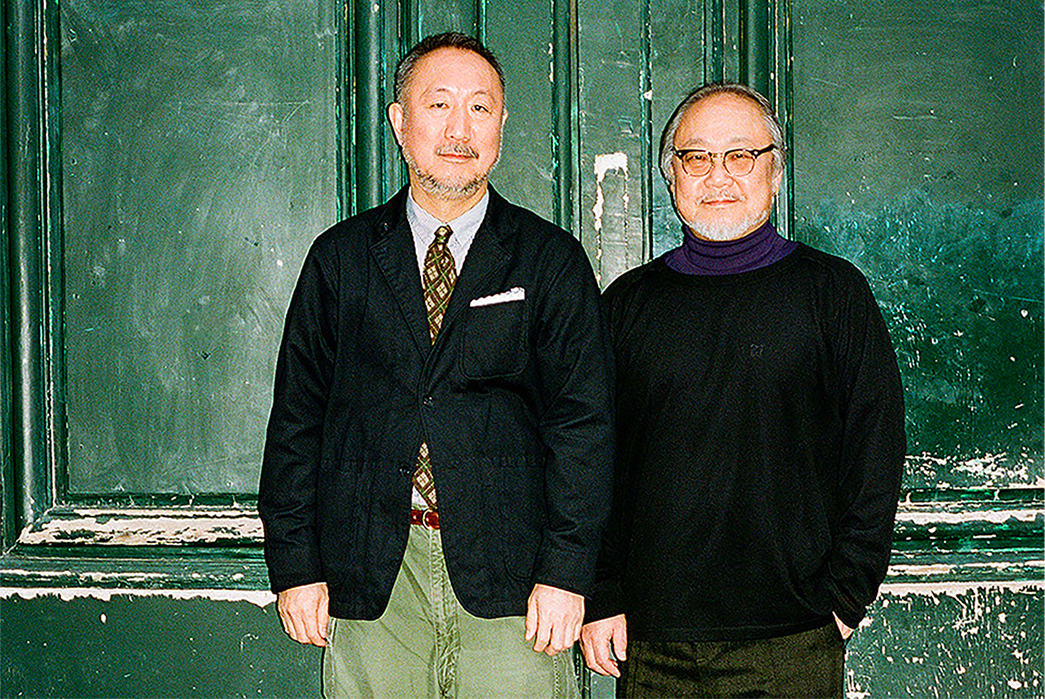
Daiki Suzuki (left) and Keizo Shimizu (right) via SSENSE/ Christopher Werner
By the late 1990s, Nepenthes had opened two stores in the U.S., first in San Francisco (1994) and then in New York (1998). Shimizu and Suzuki agreed to cease the re-sale of surplus and factory store clothing and stock all Nepenthes locations with original, in-house-made goods, from labels we will go on to discuss in this article.
Over 30 years later, Nepenthes continues to go from strength to strength, pioneering menswear and womenswear design and concept through its many labels.
The Nepenthes Brands
Engineered Garments
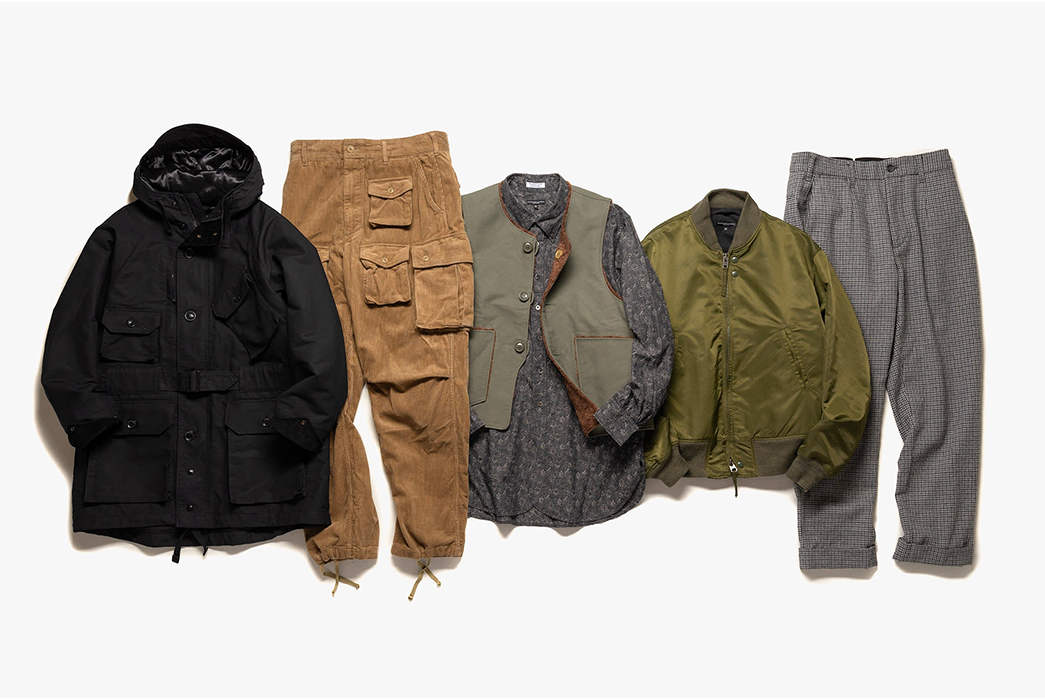
A typical collection of Engineered Garments goods via HAVEN
Perhaps the most recognizable Nepenthes label, Engineered Garments was started in 1999 and officially founded in 2002 by Daiki Suzuki. A workwear-focussed label heavily influenced by American military garb, EG produces a wide range of menswear, all of which merges into coherent collections with a clear sense of style direction led by Suzuki.
Suzuki initially conceived Engineered Garments as American-made clothing based on his inspirations and personal taste. With American clothing as his core influence, Suzuki is mindful to not produce strict recreations of old garments and looks to strip down designs and rebuild them with his vision and concept of how the garment should be engineered.
“I’d been doing the import thing for a while, and with the Internet coming into play, the competition was starting to get fiercer. It was devolving into a cat-and-mouse game of looking things up on the net. That, and American manufacturing was gradually disappearing. It seemed like we were on the verge of going out of business, so I figured we had to do something. I thought, why not just make our own products? Things I’d wanted as a buyer, that I’d wished existed. There’d be no competition.” – Daiki Suzuki, speaking to SSENSE about Engineered Garments
Despite being a Japanese-owned label, each Engineered Garments piece is made in New York, where Suzuki resides. And as well as all Nepenthes locations, Engineered Garments is stocked by dozens of retailers across the globe, including Lost & Found, Sun House, Hatchet Outdoor Supply, Kafka Mercantile, and The Bureau Belfast.
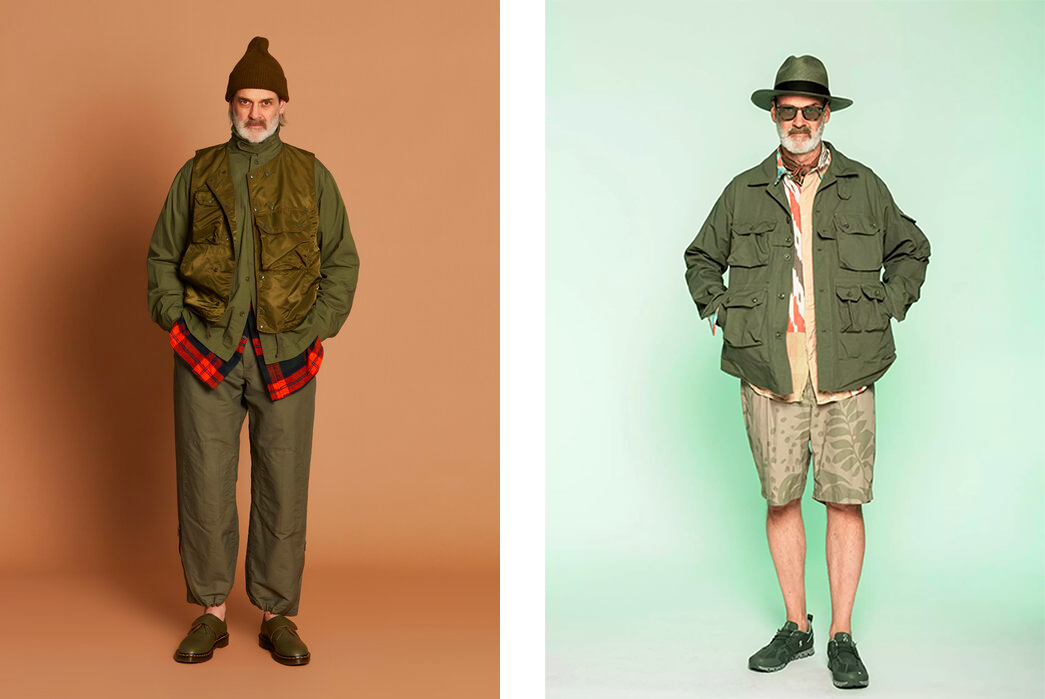
Images from Engineered Garments SS22 lookbook
If you need a basic yet high-quality piece of classic menswear, chances are Engineered Garments has what you’re looking for. Perfect work and oxford shirts, olive drab pants and work/military jackets, all manner of work pants and slacks, you name it. Silhouettes are typically wide but refined, but the majesty of Engineered Garments is how every piece can be worn together. Suzuki has a talent for creating collections that can be holistically mixed and matched. EG typically inserts a curveball vibrant pattern or print into its collections (think floral, bright colors, or vivid prints) but these curveballs effortlessly slot into lookbooks by blending with tried and tested EG staples like ripstop pants, solid button-downs, and work jackets.
Engineered Garments is also revered for its collaborations with sartorial stalwarts like Barbour, Vans, Dr. Martens, Uniqlo, Sebago, and many more.
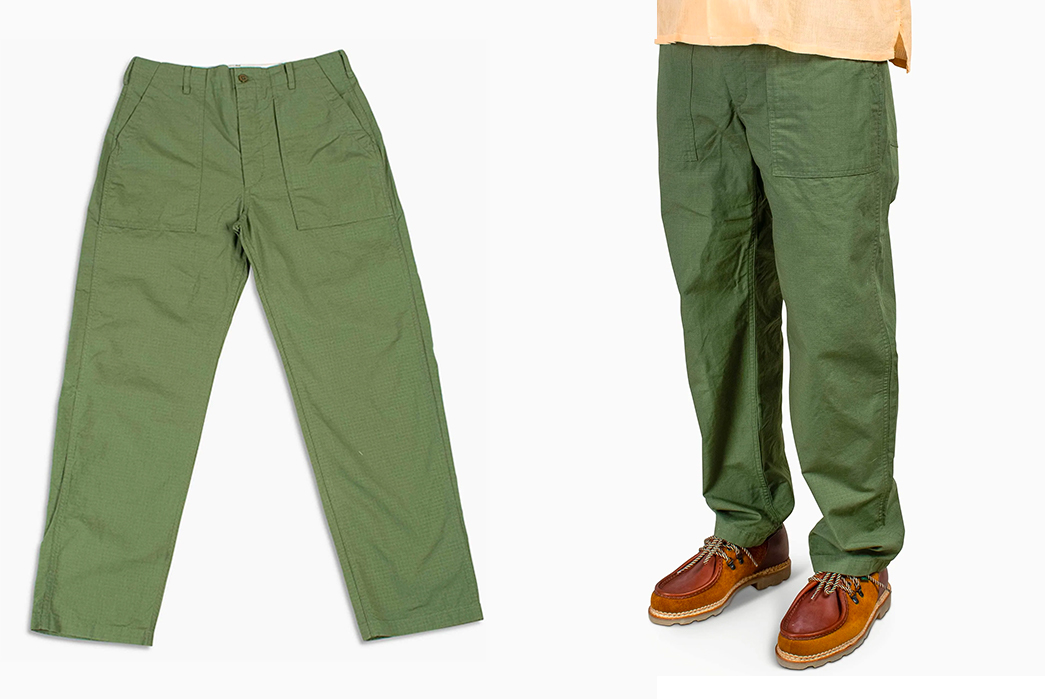
Engineered Garments Olive Cotton Ripstop Fatigues, available for $230 from Lost & Found.
Engineered Garments Workaday
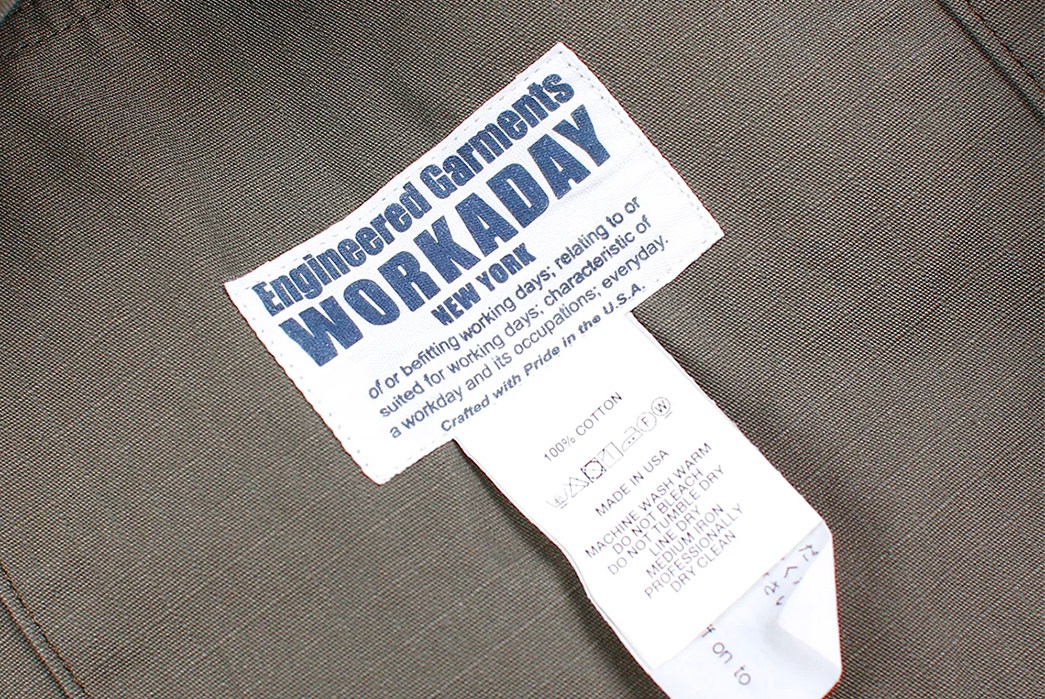
Engineered Garments Workday label via 108Warehouse
Workaday is a sub-label of Engineered Garments that consists of a collection of essential workwear basics, built to last in the USA. Engineered Garments mainline may be heavily workwear-inspired, but Workaday is simply pure, functional workwear classics like chore coats, fatigues, denim garb, and warm, hard-wearing sweats. All Workaday goods are based on classic Americana examples but have minor tweaks that lead to better cuts.
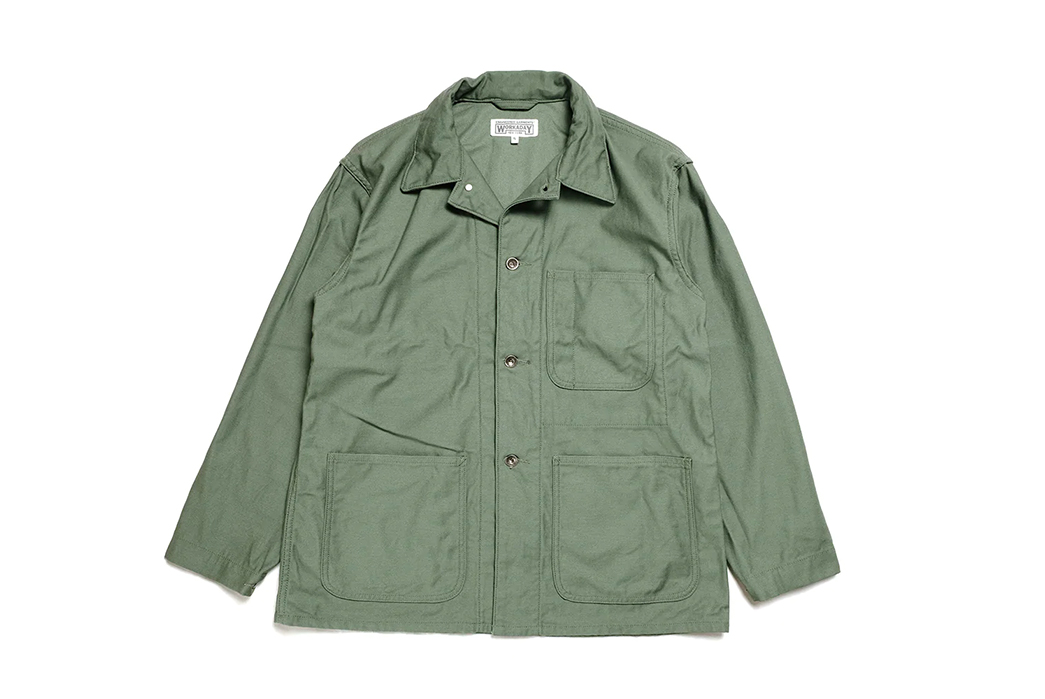
Workaday Utility Jacket in Reverse Cotton Sateen, available for $314 from Sun House.
Needles
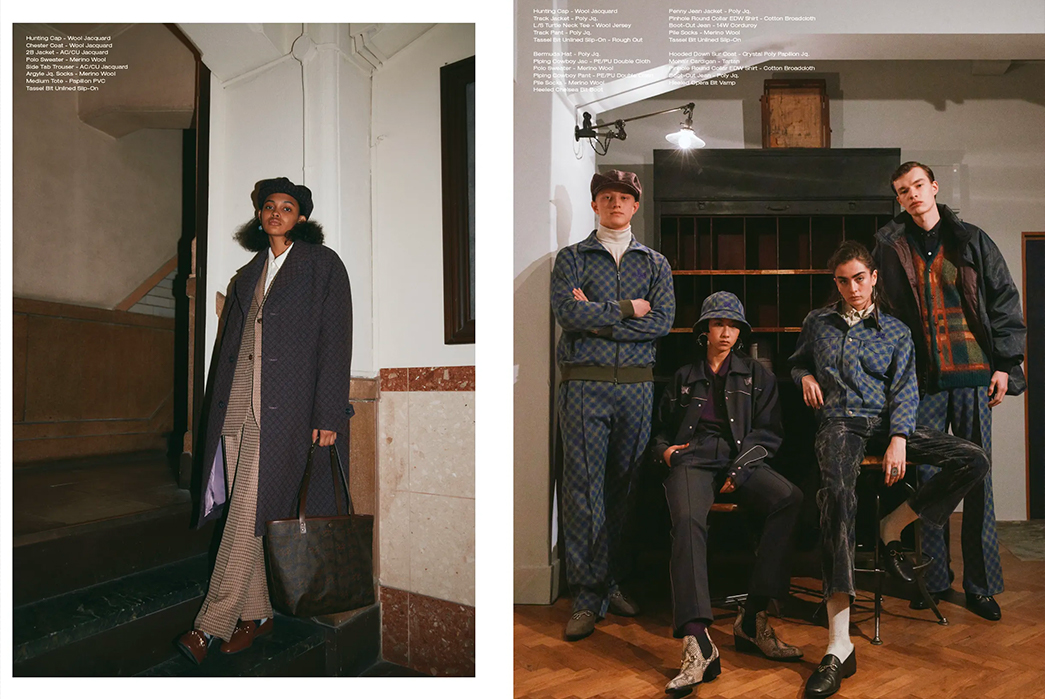
Excerpt from Needles’ FW22 Lookbook
Think military garb, sports/athletic wear, and classic Americana all chopped up (often literally) and you’ll have something like Keizo Shimizu’s seminal label, Needles.
Needles produces contemporary clothing inspired by iconic American garments from the past. It is broadly known for its polyester tracksuits (pictured above) which have been a smash hit in mainstream fashion, and its sub-label ‘Rebuild’, which takes chopped-up garments and makes them into unique, wonky, one-off pieces (examples pictured below).
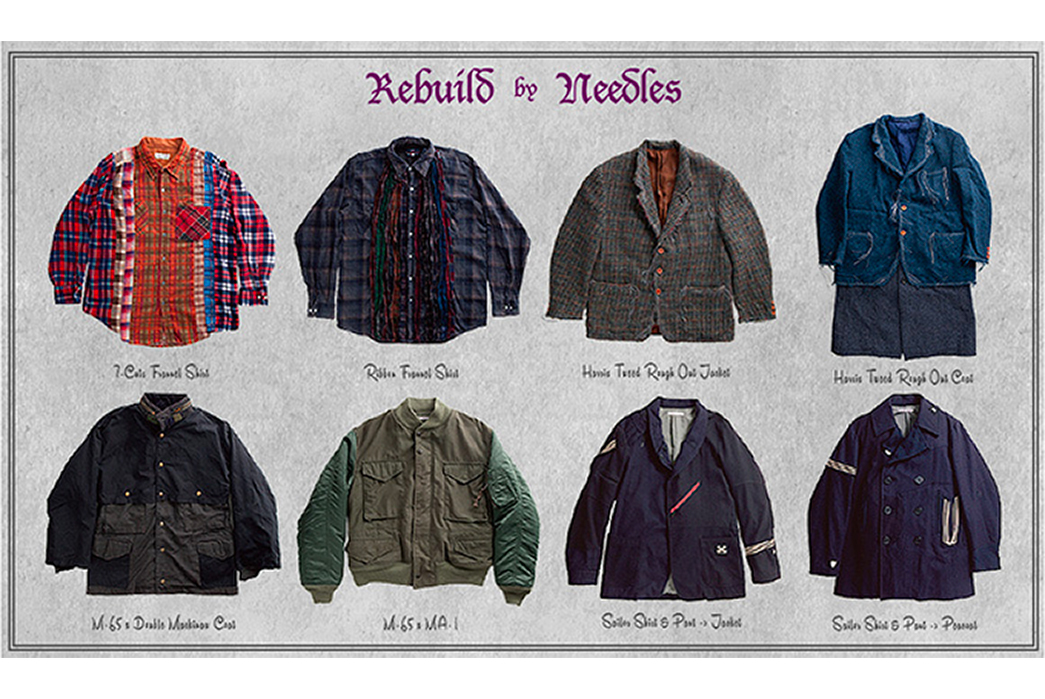
Needles Rebuild garments via Fashion-press
By the late 1990s, Shimizu wanted to move away from the import side of the Nepenthes business and toward in-house production. Needles was thus founded as one of the first in-house Nepenthes labels, initially named HOGGS, branded with a pig logo. A copyright dispute led to the re-branding of this label as Needles. Shimizu launched the label with just one item, a loose-fitting suit jacket inspired by one worn by Jazz icon Miles Davis in the 1960s.
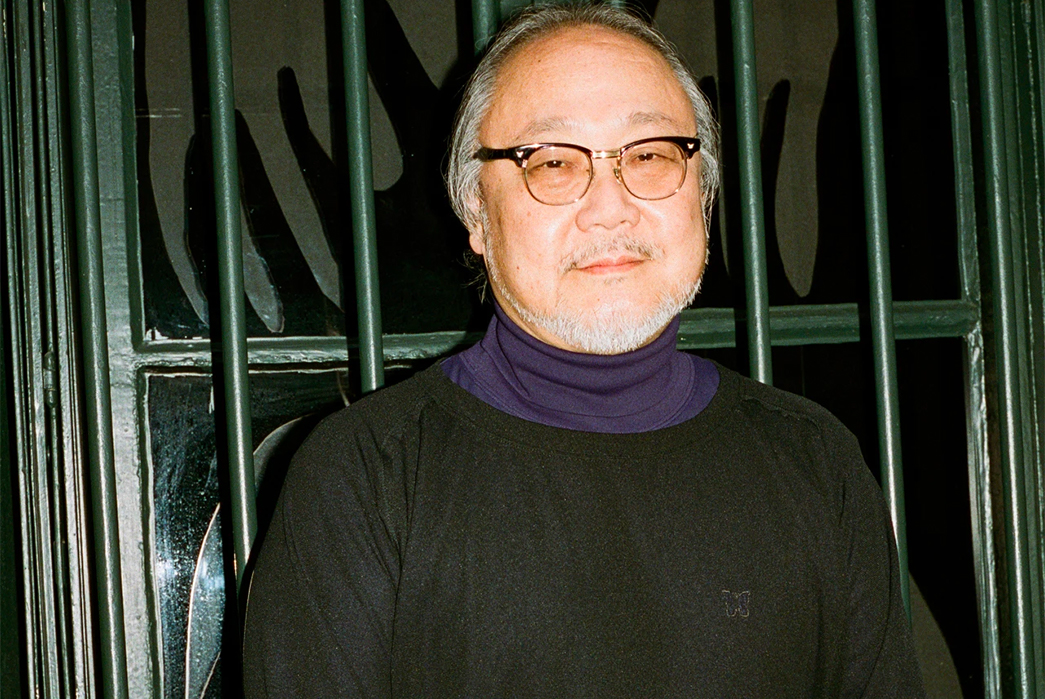
Keizo Shimizu wearing Needles via SSENSE/Christopher Werner
Our corner of the clothing world is full of Japanese takes on Americana clothing. There is something about Japan’s reverence and respect for archetypal Western silhouettes that leads to fantastic and mesmerizing garments that are and often superior to their Western counterparts. But while most Japanese brands focusing on this mantra stick to one branch of Americana — classic workwear, denim, or sportswear, for example — Needles champions a wide array of American influences in a similar way to Kapital. Anything from the gold rush, wartime, and railroading to the counterculture movements of the 1960s, hip-hop, and even gothic new romantic scenes – almost every American sartorial movement is referenced in one way or another in Shimiziu’s exciting and forward-thinking collections. The only way to really absorb it all is to grab a lookbook, visit a Nepenthes store, or peruse the Nepenthes wesbtore.
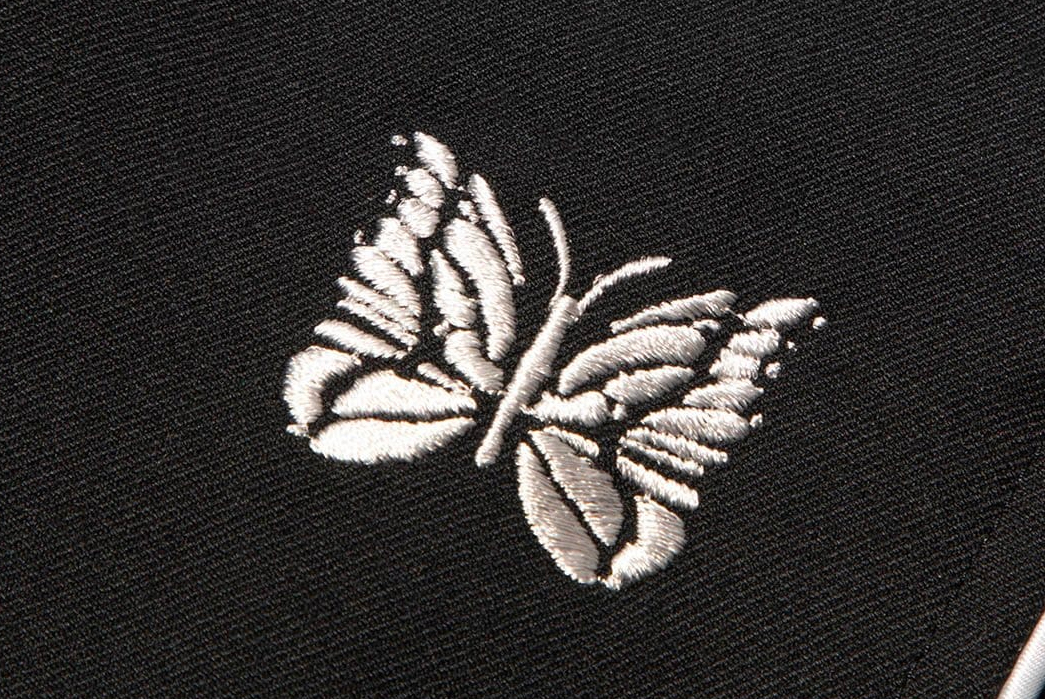
Needles iconic butterfly logo via Bodega.
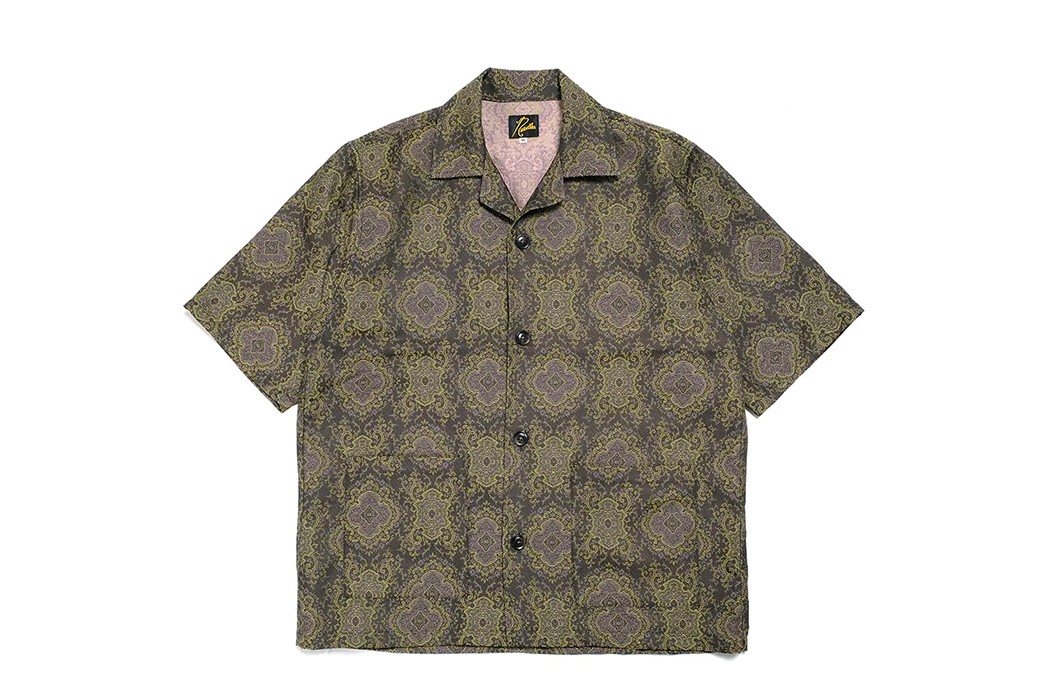
Needles Cabana Shirt, available for $295 from Sun House.
South2 West8
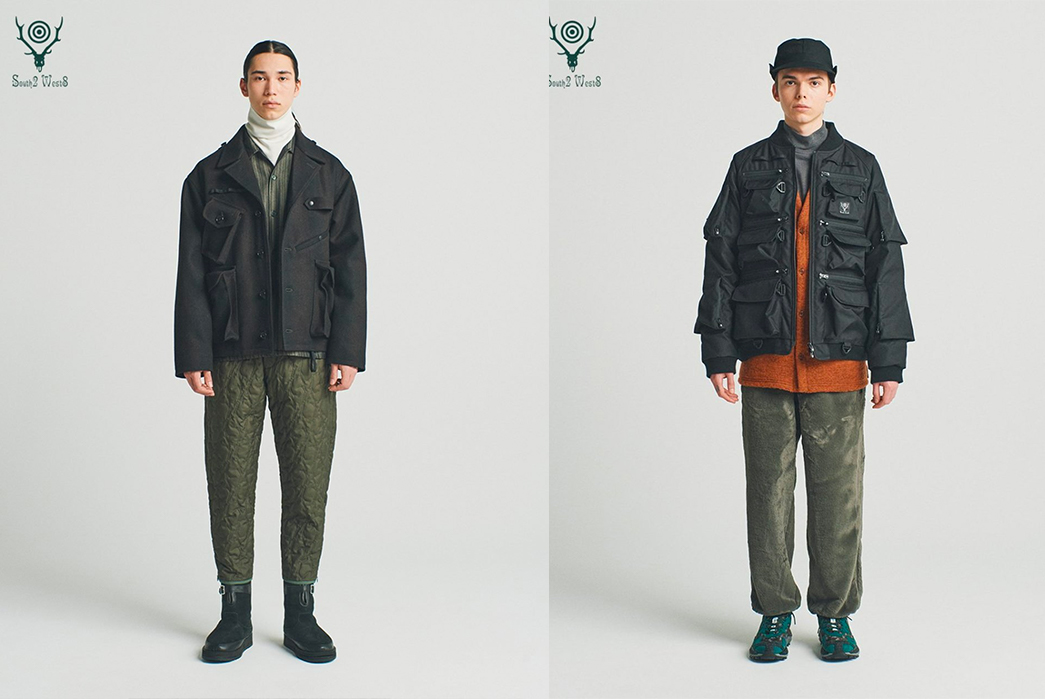
Shots from South2 West8’s FW22 Lookbook
Founded in Sapporo, Hokkaido, Japan, in 2002, South2 West8 is a Japanese fly-fishing-inspired brand headed by Kaname Nagaoka. The brand was born out of what was initially as a fishing/outdoors store in Sapporo, but grew into a fully-fledged clothing label that joined the Nepenthes family.
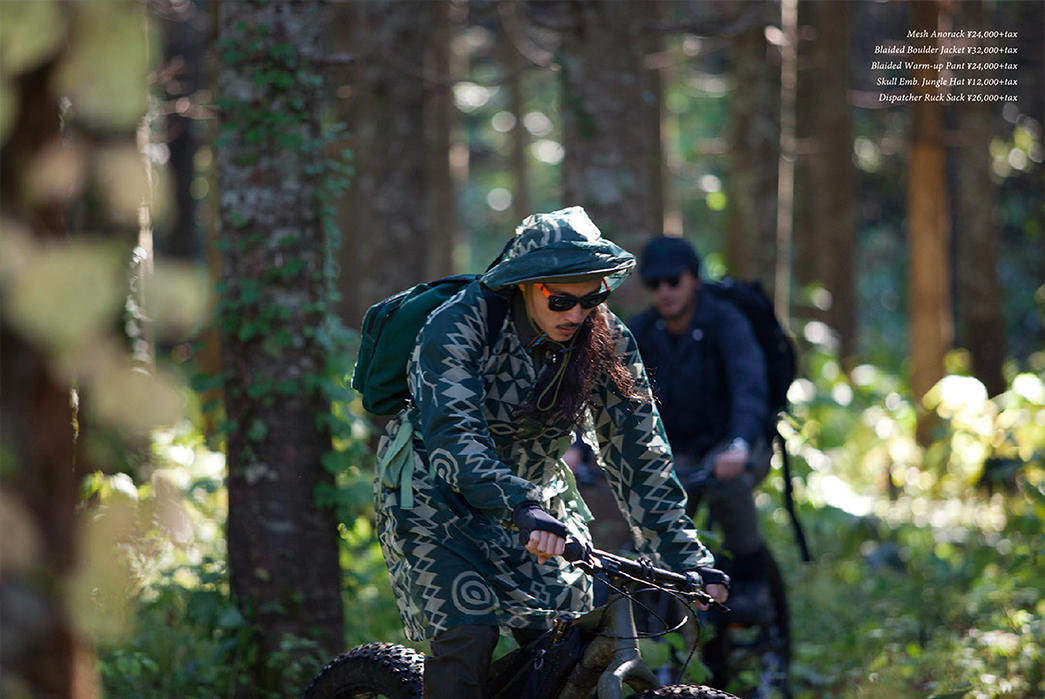
An image from South2 West8’s 2016 ‘Fish & Bike’ lookbook.
South2 West8 is anchored by the traditional Japanese method of fly-fishing, “Tenkara”. While much of the brand’s collections are unique takes on classic American garb inspired by the rural locales of Hokkaido, there are many parts of the South2 West8 offering that utilize technical features like taped seams, water-proofing, and adjustability. The brand even offers actual Tenkara gear like original, branded waders and rods.
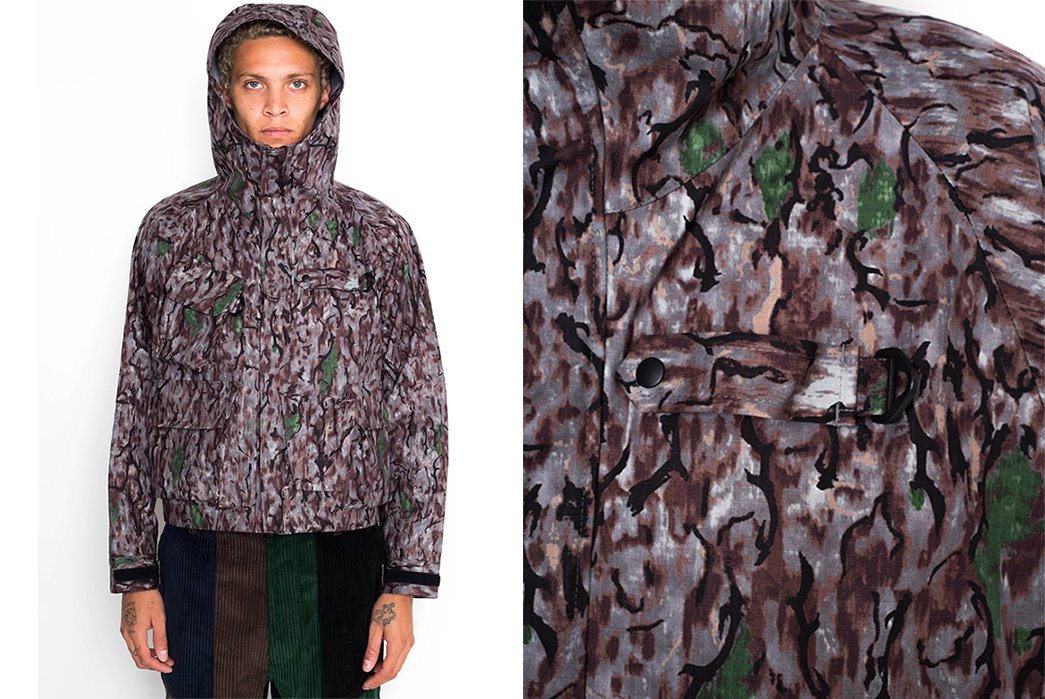
South2 West8 River Trek Jacket 3 Layer Cotton Ripstop, available for $469.50 (on sale) from Blue in Green.
RANDT
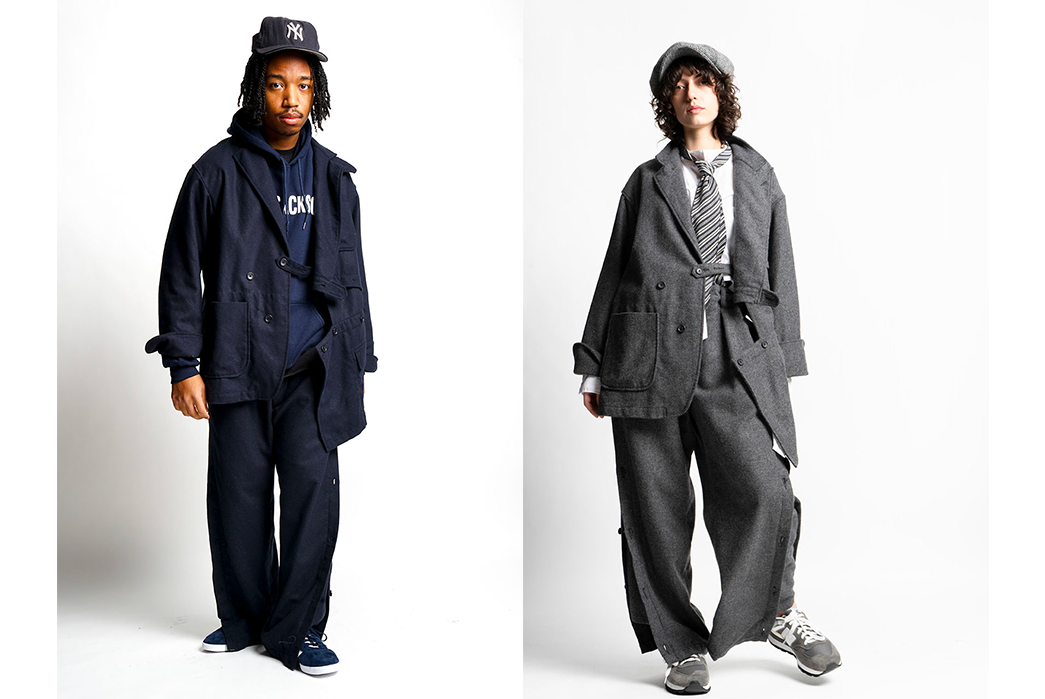
Images from RANDT’s FW21 lookbook
Short for “Rough & Tumble,” RANDT launched in 2017 as an NYC-based label under the Nepenthes umbrella. Led and designed by Daiki Suzuki, RANDT is almost like if Needles and Engineered garments had a baby. It takes classic fabrics — like cotton twill, wool, plaid and houndstooth, poplin, and more— and whips them up into relaxed silhouettes, often equipped with imaginative and slightly chaotic fastenings or pockets.
As a newer label, RANDT doesn’t have any ‘iconic’ products yet, but we’re sure some great things are to come from Suzuki’s more avant-garde offering.
AÏE
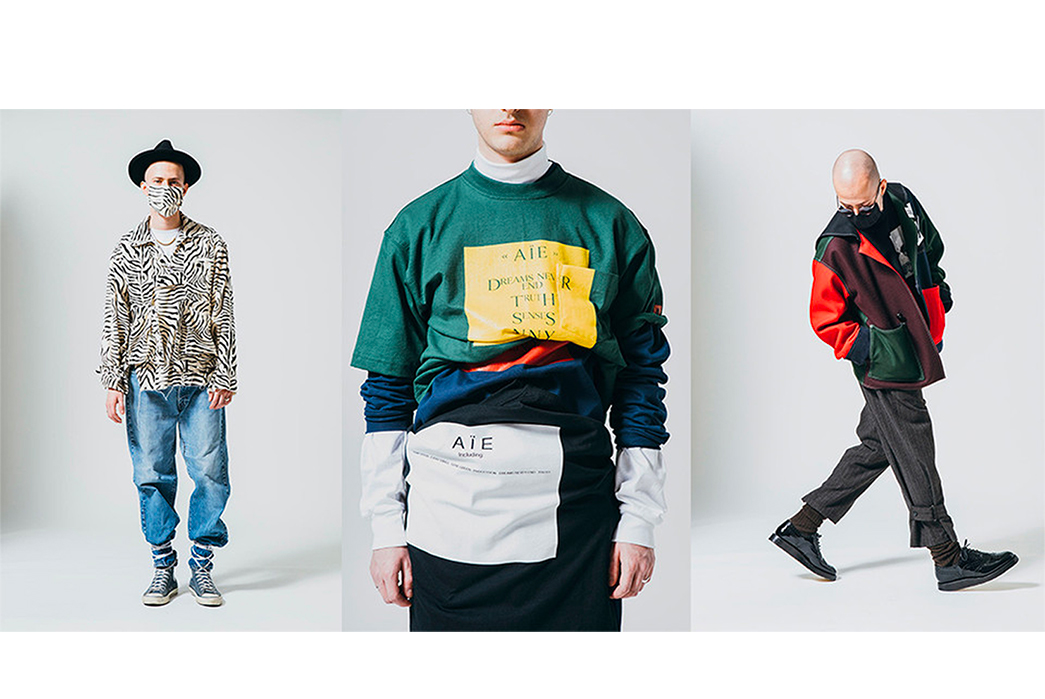
Shots from the first AïE lookbook
AïE (Arts in Education) is the first of the following 3 labels that joined the Nepenthes family in 2017. Founded by Kenta Miyamoto, former assistant designer to Daiki Suzuki, AïE is influenced by urban and rebellious subcultures and produces garments with an emphasis on bold, vibrant prints. Like Suzuki’s other labels, AïE pieces are typically produced in NYC’s garment district.
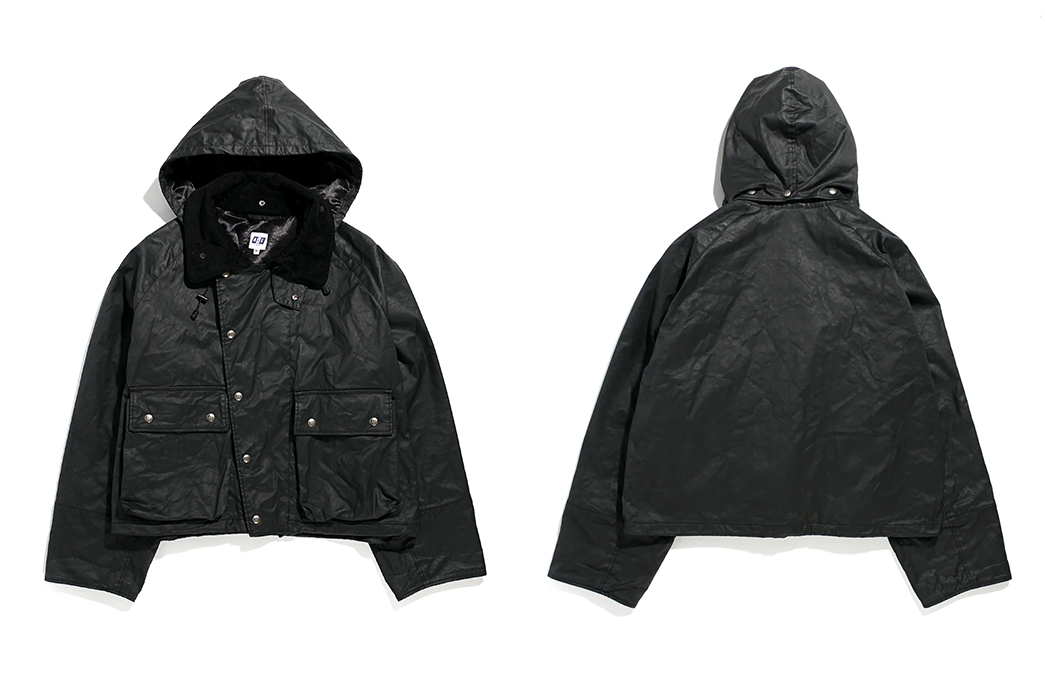
AïE FSG Jacket, available for $600 from Nepenthes NY.
RhodolirioN & BLANK LABEL
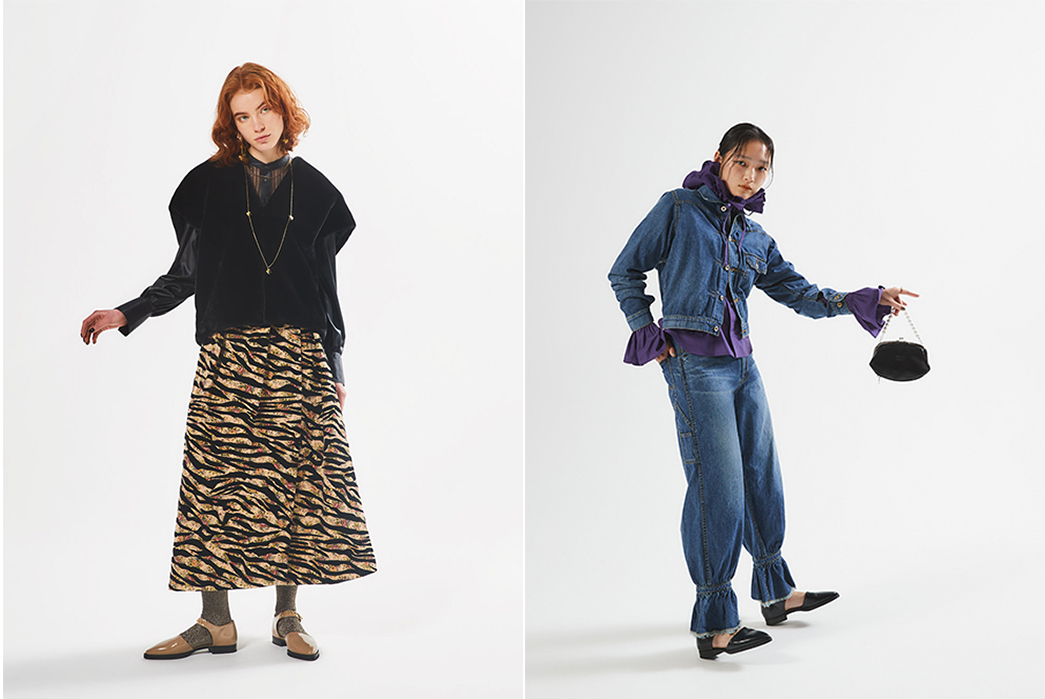
Shots from RhodolirioN’s SS22 lookbook
RhodolirioN is a women’s brand by Nepenthes Woman, which was fully launched with its FW22 collection. Aiming to create stimulating and universally loved clothing that pays respect to historical fashion and culture. The name is pronounced “Rodrillion” and is derived from a beautiful plant that produces a field of purple flowers only once every few years in the harsh conditions of the desert.
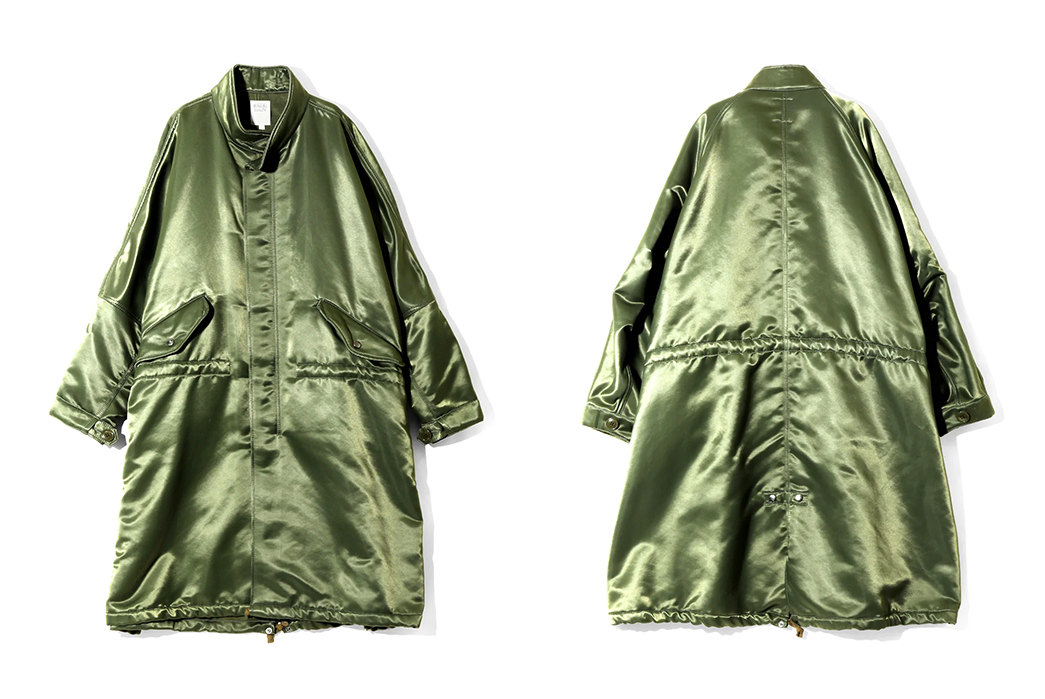
RhodolirioN Dolman Sleeve M-65 Coat, available for $607 from Nepenthes NY.

BLANK LABEL FW22 shots
Also launched at the tail end of 2022, BLANK LABEL is another womenswear label by Nepenthes Woman that is rumored to still be under production and progression (hence the ambiguous name). The label’s first collection is heavily inspired by military workwear of the US army and Navy – very on-brand for a Nepenthes label.
As newer labels, BLANK LABEL and RhodolirioN don’t necessarily have any ‘iconic’ products yet, but we hope they further expand the Nepenthes’ Woman offering.

